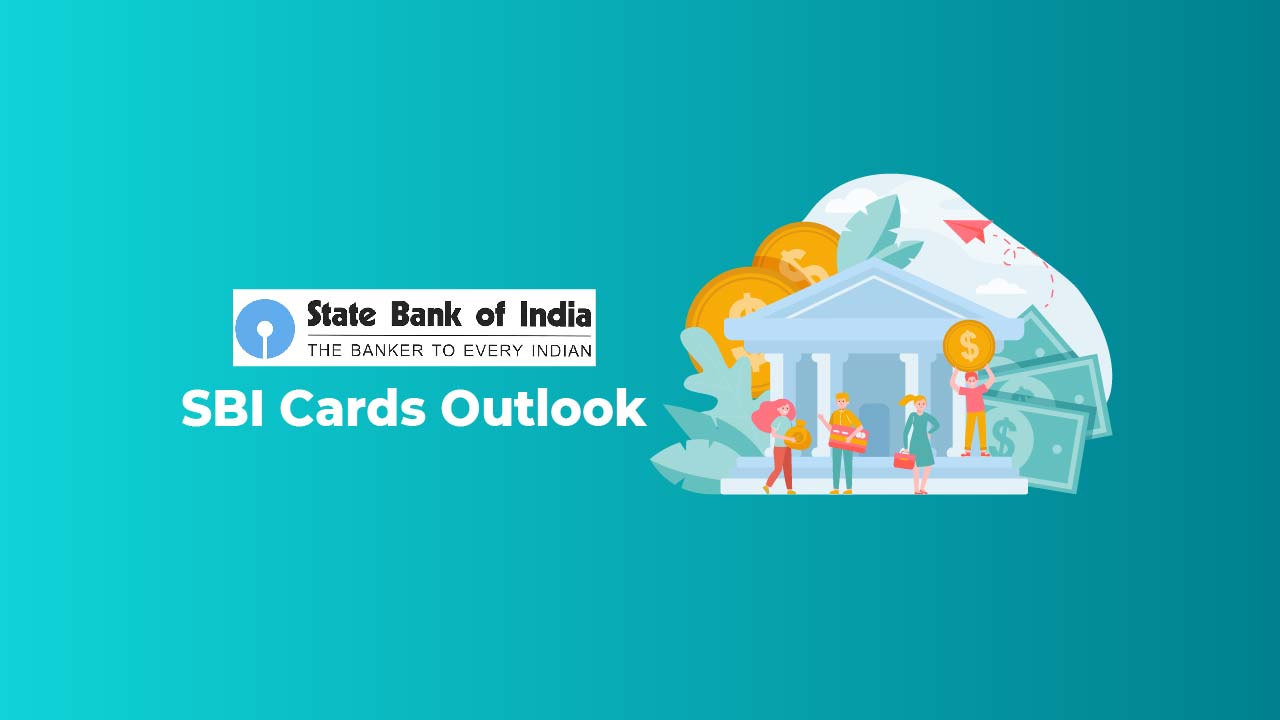Market Outlook for 29 July 2024
SBI Cards Business Outlook

Last Updated: 14th December 2022 - 05:26 pm
The Indian credit card industry has been growing strongly at 19%-25% CAGR in the card in force spending (online + offline) over FY17 to 9MFY22. The growth is expected to continue in the future given that the credit card industry is at a relatively nascent stage with only 4% of the population (FY21) having at least 1 credit card.
As of March 2022, the number of debit cards in circulation stood at 898 million resulting in debit card penetration of about 63% of the basic population which shows high potential for players to cross-sell credit cards. There is a significant opportunity in the Indian Credit Card Industry given only 4% of the Indian population possess at least one credit card in FY21 compared to 53% and 329% for China and USA.
SBI Card's market share in terms of total credit cards in force has increased from 17% in FY18 to 19% in 9MFY22, which is led by improving market share in incremental gross new cards sourcing from 19% in FY17 to 28% in FY21. Owing to the impact of covid, industry gross and net cards in force addition came down sharply in FY21. This has again started picking up in FY22. In terms of overall spending, SBI Card's market share has increased from 17% in FY18 to 19% in 9MFY22. In terms of the number of transactions, SBI Card's market share has increased from 15% in FY18 to 20% in 9MFY22.
In terms of credit card receivables, SBI Cards has grown at a CAGR of 24% over FY17- 9MFY22. In FY21, SBI Cards and ICICI Bank cards were the biggest beneficiaries when RBI had imposed restrictions on HDFC Bank on new cards issuance.
Over the past few years, SBI Cards has been increasing focus on sourcing new cards outside Tier I, with the share of new gross cards sourcing from Tier I coming down to 39% in 9MFY22 from 67% in FY17. Strong focus especially on Tier III cities & beyond has resulted in SBI cards holding a commanding market share of 34% in Q3FY21 for gross new card sourcing from Tier III & beyond geographies among credit card issuers in India. For the SBI card, asset quality from Tier III and beyond geographies has held up quite well.
SBI card offers a comprehensive portfolio of credit cards catering to a wide base and diverse cardholder needs. Broadly, the card base can be divided into 2 categories - (a) Retail; and (b) Corporate. Card offerings can be subcategorized into – (a) Premium, (b) Non-premium as well as (a) Flagship (Core Cards / branded), and (b) Co-branded cards.
Fee Income Sources:
(i) Spend Based - Interchange Fees: Fees earned on spending or interchange fees are a percentage of the merchant discount rate (“MDR”) which goes to the issuing bank (credit card issuer), driven by spending volume.
(ii) Instance-based fees: Late fees, cash-withdrawal fees, processing fees for value-added products, over-limit fees, dishonor fees, etc., driven by increasing spending and higher revolver balance
(iii) Subscription-based fees: Credit-card membership and annual fees; driven by strong new cards sourcing, and business development fees (earned from payment network partners) driven by higher incremental cards sourcing and spending volume.
Fee income for SBI cards has seen strong growth at ~31% CAGR during FY17-21. For SBI Cards, Spends-based fees account for 46% of overall fee income throughout FY17-21; however, on account of covid certain categories (like travel, premium products, consumer durables) spend volumes were muted during FY21 and 9MFY22, which resulted in the contribution of spend based fees dropped to 41% of overall fee income in FY21. There has been an increased contribution from instance-based fees (late payment fee, restructuring fee, etc.) which account for 43% of overall fee income in FY21 vs 28% in FY17.
For SBI Card, the Interchange fee contributes 24% to the overall operating revenue mix in 9MFY22. Also, SBI Card and other issuers might bring changes in their operating economics like reducing interest-free periods, etc. to cushion the impact.
Non-interest operational expenditure is around 50% of operating income (including Interest income on receivables) for SBI Card consistently over the years, which signifies credit card business has a high-cost structure compared to other lending businesses. The variable cost is mainly attributed to new card acquisition expenses and spend origination expenses. Thus, the credit card business has lower operating leverage compared to other lending businesses, as operational expenditure growth is largely in-line with top-line growth.
SBI Card has been able to post avg. ROE of 26% over the period FY17-21, which is higher than global peers. Its ROE volatility has also been lower than its global peers.
Risks:
- Credit card interchange fees are one of the largest components of SBI Card's total revenue from operations. Any change in laws or regulations that prescribes a ceiling on, or otherwise restricts its ability to charge interchange fees or similar fees, could adversely affect its business and thus financial performance.
- High provisions and writeoffs can impact near-term performance, while growth may take a back seat.
Over the last 3 years, UPI has scaled up dramatically as an easy alternative payment system. With the option of a credit revolve facility, rewards programs face less competition from UPI.
- While BNPL is perceived to be a challenger to credit cards, the glaring differences in terms of the target customer segment and value proposition indicate the two products are likely to coexist. With the low penetration of credit cards and BNPL, the addressable market opportunity for both products remains large. Most of the credit card issuers focus on the salaried, existing bank and existing credit customers within the age group of 26-50 years. BNPL, on the other hand, focuses on Gen Z and millennials segment, the new credit segment, and lower credit limits.
- Dependency on third-party payment networks to operate its credit card business
Trending on 5paisa
Discover more of what matters to you.
Market Outlook Related Articles
 Sachin Gupta
Sachin Gupta Ruchit Jain
Ruchit Jain Tanushree Jaiswal
Tanushree Jaiswal




